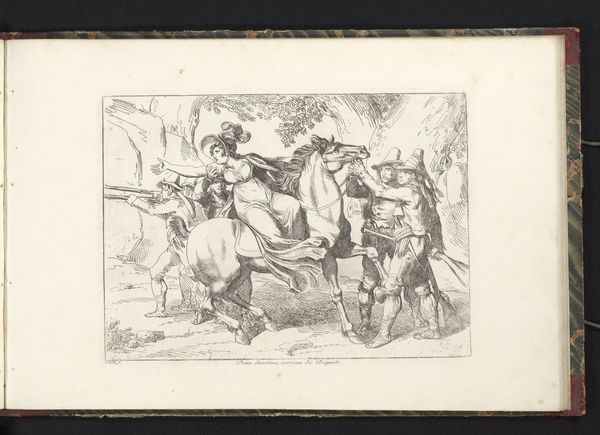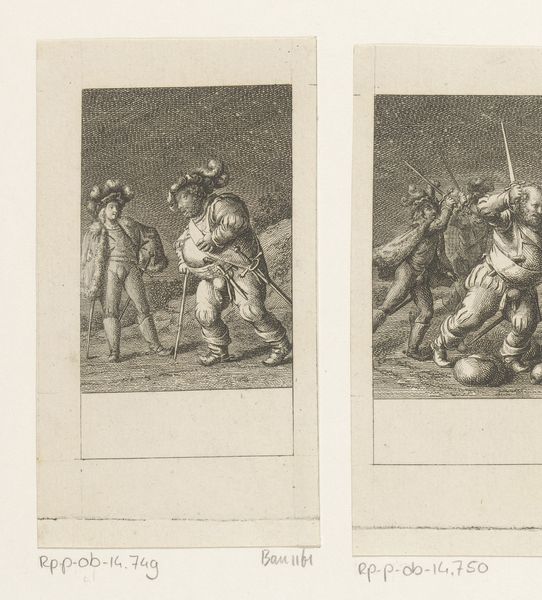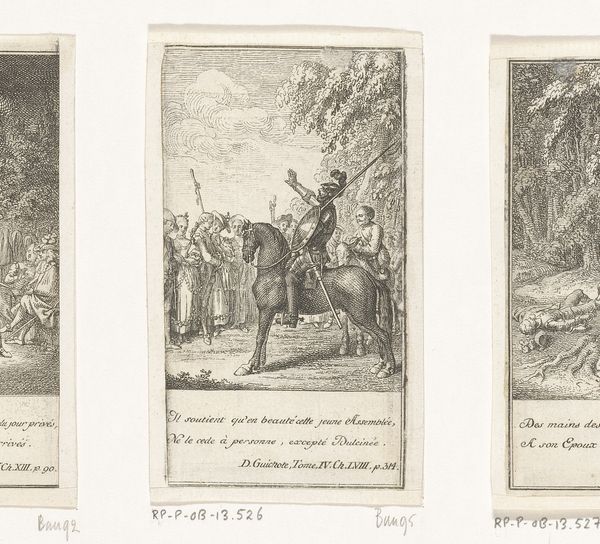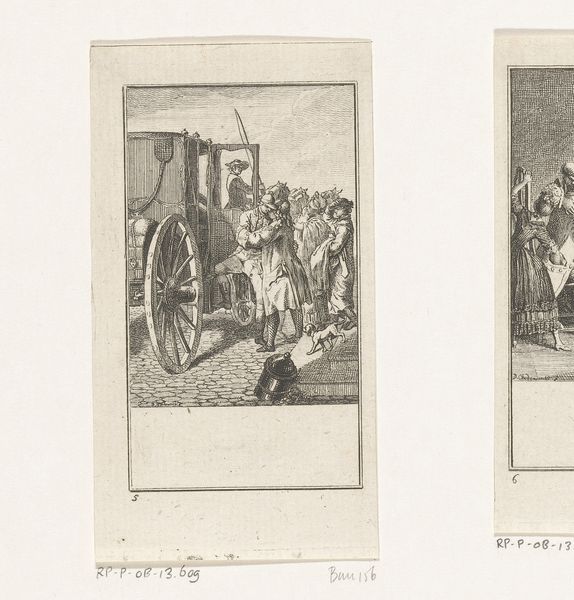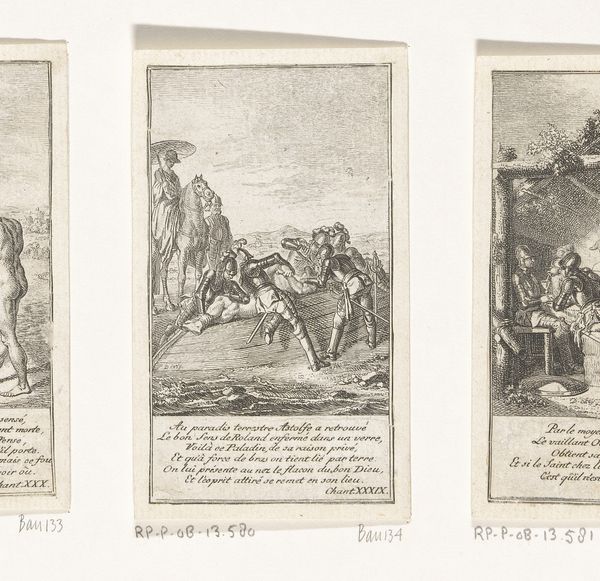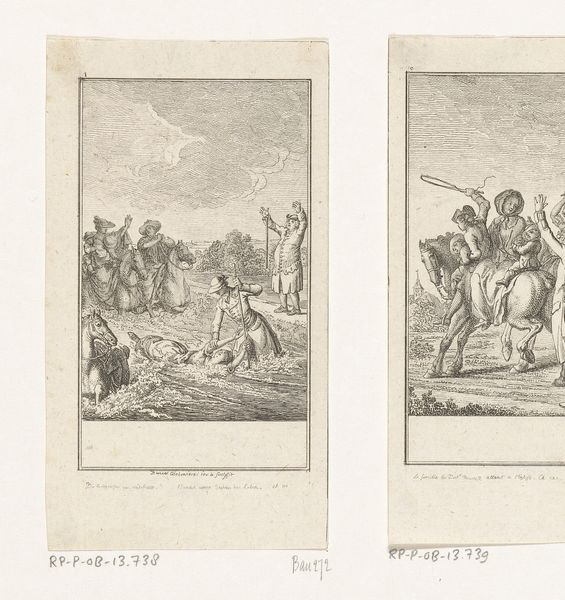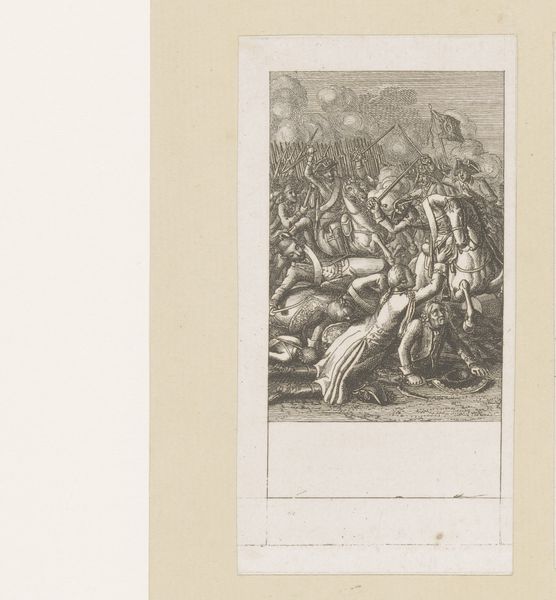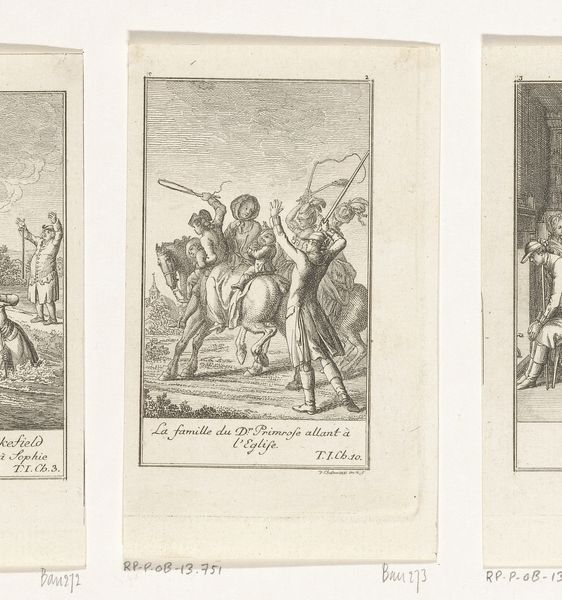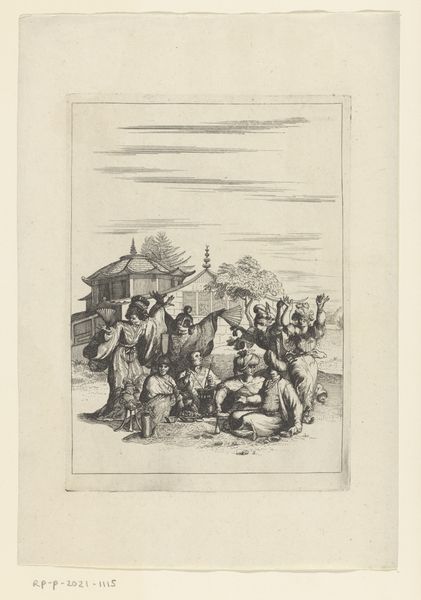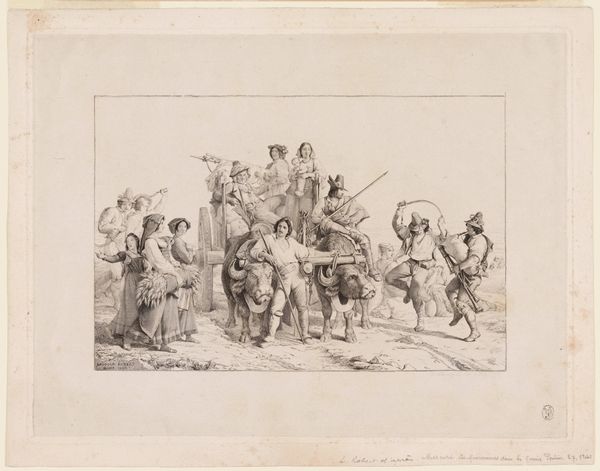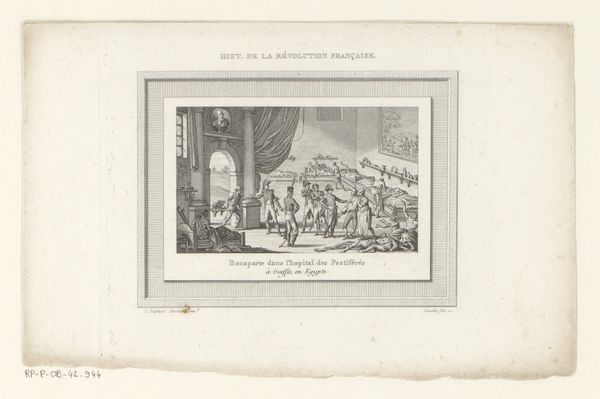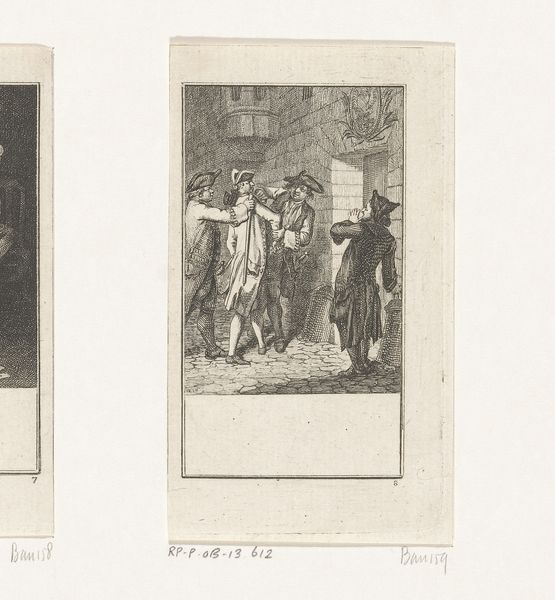
Le Général Burgoyne à Saratoga, le 17 Octobre, 1777; and Le Général Cornwallis à Yorck, le 19 Octobre, 1781 1781
0:00
0:00
drawing, print, etching, paper, ink
#
drawing
#
narrative-art
#
ink paper printed
# print
#
etching
#
paper
#
ink
#
history-painting
Dimensions: plate: 7 1/4 x 9 3/4 in. (18.4 x 24.7 cm) sheet: 10 3/4 x 16 1/2 in. (27.3 x 41.9 cm)
Copyright: Public Domain
Editor: This print, made in 1781, is called *Le Général Burgoyne à Saratoga* and *Le Général Cornwallis à Yorck*. It looks like an etching, done in ink on paper, and the composition is divided into two scenes side by side. The images seem like scenes of surrender. What do you make of this? Curator: What strikes me immediately are the animals chosen to represent these surrenders. In the first panel, General Burgoyne rests his hand on an enormous, subdued turkey, a symbol dripping with irony considering its association with the New World. Editor: So the turkey represents America? Curator: Precisely! It stands as a powerful, if somewhat comical, emblem of the American colonies. Then look at the second panel; Cornwallis kneels before what appears to be a defeated lion or dog, representing Great Britain's surrender. The power dynamic, emphasized by the animals, really stands out, don't you think? Editor: Definitely. The contrast between the turkey and the lion is so interesting! Is it a common practice to portray countries as animals in the context of war? Curator: Absolutely. Think about the eagle representing empires, or even the bear for Russia. It simplifies and visualizes complex political relationships and emotional connections on both sides, leaving powerful impressions in the viewer’s mind, regardless of literacy. Editor: I see, it's about creating an immediate, accessible understanding of power. It makes me wonder, were these symbols universally understood back then? Curator: Probably to certain demographics and nations! Each image probably ignited different associations depending on the audience, adding layers to the print’s meaning over time. The choice of symbolism holds fascinating clues to contemporary biases and beliefs. Editor: I never considered how animal symbolism could reveal so much about the cultural context of a historical event! Thanks for expanding my perspective!
Comments
No comments
Be the first to comment and join the conversation on the ultimate creative platform.
